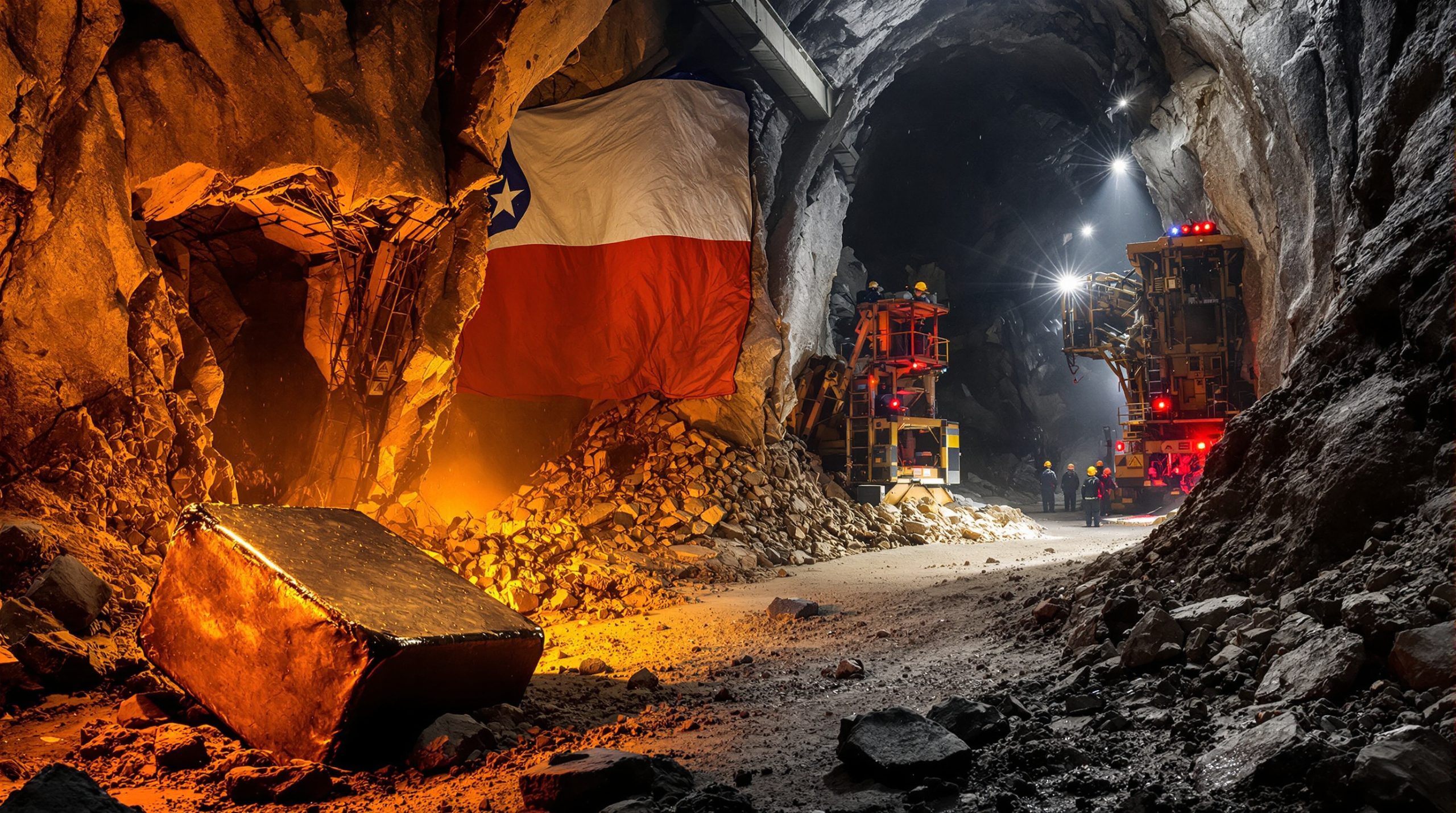How Is Flagship Gold Reviving Mali's Historic Morila Mine?
New York-based Flagship Gold Corp has entered into a strategic partnership with Mali's state-owned mining company to rejuvenate the once-productive Morila gold mine, which has remained dormant since 2022. This collaboration marks the first American investment under Mali's revised mining regulations, coming at an opportune moment when gold prices analysis are reaching unprecedented heights.
The Morila mine, located in the southern city of Sanso in Mali's Sikasso region, was previously operated by major mining companies including Barrick Gold and AngloGold Ashanti. The mine contains estimated reserves of approximately 2.5 million ounces of gold, representing significant untapped potential. During its peak production year in 2003, Morila yielded approximately 250,000 ounces of gold, establishing itself as one of Mali's most productive gold mines of that era. Between 2000 and 2013, the mine produced an impressive 5+ million ounces of gold, demonstrating its historical significance to Mali's mining sector.
Operations at Morila ceased in 2022 when Australian firm Firefinch abandoned the project due to declining output and escalating operational costs. The Mali government subsequently took control of the mine in June after production continued to decrease while expenses mounted.
The Morila Mine's Rich History and Current Status
Morila is situated approximately 280 kilometers south of Bamako in the agriculturally rich Sikasso region. The mine's development began as a joint venture, with ownership distributed among AngloGold Ashanti (40%), Barrick Gold (40%), and the Mali government (20%) when production commenced in 2000.
The mine operated primarily as an open-pit mining operation using conventional truck-and-shovel methods. Its processing infrastructure included a carbon-in-leach (CIL) treatment plant with an annual capacity of 3.6 million tonnes, reflecting substantial processing capabilities. This technological foundation provides Flagship Gold with established infrastructure upon which to build its revival strategy.
From a geological perspective, the Morila deposit forms part of the Yanfolila Gold Belt within the Birimian Supergroup, a geological formation known for hosting numerous world-class gold deposits across West Africa. This geological context explains the mine's rich historical production and suggests potential for continued exploration success.
Firefinch Limited acquired the mine from joint venture partners in 2020 and announced a transition to owner-mining operations in late 2021 before ultimately abandoning the project the following year. The revival of Morila now represents a critical test case for Mali's mining sector under new regulatory conditions.
What Makes This Deal Significant for Mali's Mining Sector?
The partnership between Flagship Gold and Mali's state-owned mining company arrives at a pivotal moment for Mali's resource sector, which has experienced declining investment amid regulatory changes and regional instability. This agreement potentially signals renewed investor confidence despite challenging conditions.
Strategic Importance in Regional Mining
Mali consistently ranks among Africa's top gold producers, having secured the position of Africa's third-largest gold producer in 2020, behind Ghana and South Africa. The country produced approximately 65 tonnes (2.09 million ounces) of gold annually at that time. This production capacity underpins Mali's economic stability, with gold exports accounting for approximately 70% of the country's total export revenues as of 2019.
The mining sector's contribution to Mali's economy is substantial, accounting for 8-10% of GDP according to World Bank analysis. The industry directly employed an estimated 25,000-30,000 workers in formal mining operations as of 2018, with the Chamber of Mines of Mali indicating that indirect employment from mining activities could support over 200,000 livelihoods when including artisanal mining and support services.
Major producing mines that have historically anchored Mali's gold industry include the Loulo-Gounkoto complex operated by Barrick Gold (which produced 610,000 ounces in 2020), the Sadiola Mine joint venture (with historical production averaging over 200,000 ounces annually), and the Syama Mine with its significant underground operations.
Economic Impact Potential
The revival of Morila presents multiple economic opportunities for Mali, particularly for the Sikasso region where the mine is located. Sikasso is Mali's most populous and agriculturally productive region, with an economy traditionally based on cotton, mangoes, and other agricultural products. The addition of mining employment could significantly diversify economic activity in the area.
Specific economic benefits could include:
- Creation of hundreds of direct jobs in a region predominantly reliant on agriculture
- Development of thousands of indirect employment opportunities through supply chain and service provision
- Contribution to government revenue through taxation and royalties
- Technology transfer and skills development for local workers
- Infrastructure improvements benefiting surrounding communities
The success of this partnership could establish a model for future mining investments under Mali's new regulatory framework, potentially attracting additional international capital to the country's resource sector.
How Does Mali's New Mining Code Affect Foreign Investment?
Mali's mining regulatory overhaul fundamentally changes the relationship between the government and foreign mining companies. The revised framework prioritizes national interests while creating a more challenging environment for international investors.
Key Elements of the Mining Code
Mali has revised its mining legislation multiple times since independence, with each iteration reflecting evolving priorities:
- In 1991, Mali established its first post-independence mining code, creating a liberal investment framework
- The 1999 revision attracted major international mining companies through favorable terms
- The 2012 code maintained investor-friendly provisions including 10% state participation options, tax exemptions on equipment imports, five-year exemptions from corporate tax, and preferential customs duties
The recent mining code changes reportedly allow government participation of up to 30% ownership in new mining projects, eliminate previously available tax exemptions, and create a framework for increased state involvement in resource extraction.
State Ownership Requirements
This shift toward greater state participation follows similar resource nationalism trends across the region. According to the Columbia Center on Sustainable Investment, resource nationalism increased across Africa following the commodity super-cycle of 2010-2014, with governments seeking greater participation in resource revenues.
Comparable developments in neighboring countries include:
- Tanzania's 2017 introduction of 16% free-carried government interest in mining projects, along with increased royalties from 4% to 6% and a ban on exporting unprocessed minerals
- The Democratic Republic of Congo's 2018 mining code revision that increased royalties on precious metals from 2.5% to 3.5% and introduced mandatory 10% state participation
- Guinea's 2011 mining code establishing mandatory 15% state participation and local procurement requirements
Investment Climate Implications
The Fraser Institute's Annual Survey of Mining Companies has documented Mali's declining policy potential index from 2015-2020, indicating growing investor concerns about regulatory stability. This trend appears to be affecting investment patterns in the country:
- Traditional Western investors have shown hesitation under the new regulatory framework
- Russian and Chinese firms have expanded their presence through state-backed arrangements
- Chinese foreign direct investment in African mining exceeded $2 billion annually by 2019, with China becoming the largest consumer of African minerals
- Russian companies like Nordgold have established operations in neighboring countries like Burkina Faso
Foreign direct investment in Mali's mining sector averaged $400-600 million annually between 2015-2019, but recent regulatory changes may alter this investment landscape significantly. The Flagship Gold partnership represents a test case for how American companies might navigate Mali's evolving investment environment.
What Challenges Does the Morila Revival Face?
Restarting a dormant mine presents numerous technical and logistical obstacles that Flagship Gold must overcome to achieve profitable production.
Operational Hurdles
Industry analysis indicates that dormant mine restarts face specific technical challenges:
- Equipment deterioration and substantial maintenance backlogs following periods of inactivity
- Groundwater management issues in open pits that have been left unattended
- Workforce recruitment and retraining requirements to rebuild operational capacity
- Re-establishment of complex supply chains in potentially difficult environments
Historical data shows that Morila's all-in sustaining costs (AISC) were reported at $900-1,100 per ounce during 2019-2020 operations under Firefinch. Flagship Gold will need to manage costs carefully to ensure profitability, particularly given the infrastructure challenges present in Mali.
Mali's infrastructure development index has ranked among the lowest in West Africa, with significant gaps in road quality and electricity access outside major urban centers. These infrastructure limitations could complicate Morila's revival, affecting transportation of equipment, supplies, and processed materials.
Security Concerns in Mali
Regional security represents another significant challenge for mining operations:
- The Armed Conflict Location & Event Data Project (ACLED) recorded over 2,000 violent events in Mali in 2020, with increasing activity in central and northern regions
- The Global Terrorism Index ranked Mali among the 20 countries most impacted by terrorism as of 2020
- Major mining companies have periodically adjusted operations in response to security concerns, with Barrick Gold temporarily suspending operations at Loulo-Gounkoto in 2020 due to security issues
- Several exploration companies reduced their presence in Mali during 2020-2021 due to security and regulatory uncertainty
While the Sikasso region where Morila is located has historically been more stable than northern Mali, security considerations will remain an operational factor requiring significant risk management protocols.
Production Decline Context
Mali's gold production has faced challenges in recent years, with output declining from 50.8 tonnes in 2019 to 49.5 tonnes in 2020 according to U.S. Geological Survey data. This trend reflects broader operational difficulties across Mali's mining sector, including:
- Aging mines with declining ore grades
- Infrastructure limitations constraining expansion
- Regulatory uncertainty affecting investment in new production
- Security concerns complicating logistics and operations
Reversing these trends at Morila will require substantial capital investment, technical expertise, and effective management of security and regulatory risks.
What Opportunities Does the Current Gold Market Present?
The timing of Morila's revival coincides with a historically strong gold market, creating a favorable economic environment for mining projects that might otherwise be marginally profitable.
Record Gold Price Environment
While gold market conditions fluctuate, historical context provides important perspective:
- Gold reached an all-time high of $2,067.15 per troy ounce in August 2020
- The precious metal averaged $1,770 per ounce in 2020 and $1,799 per ounce in 2021
- Investment demand for gold reached 1,773 tonnes in 2020, the highest since 2012
Strong gold prices significantly impact mining economics. According to S&P Global Market Intelligence, the average all-in sustaining cost (AISC) for global gold production was approximately $1,050-1,150 per ounce in 2020, meaning operations with costs below these levels were profitable at prevailing gold prices.
Market Dynamics
Several factors have influenced gold's strong performance in recent years:
- Global economic uncertainty driving investor demand for safe-haven assets
- Central bank purchasing programs adding demand pressure
- Supply constraints from traditional mining regions limiting new production
- Production challenges at existing mines affecting global supply
- Increasing competition for high-grade gold deposits globally
The World Gold Council has noted that higher gold prices typically enable mining companies to process lower-grade ore economically, extend mine life by accessing marginal reserves, and invest in exploration and infrastructure improvements that might be uneconomical in lower price environments.
Financial Considerations
Mining economic studies indicate that gold mines require several key conditions for profitability:
- Gold prices at least 20-30% above AISC to provide adequate returns
- Minimum 5-7 year mine life to justify restart capital expenditures
- Accessible reserves requiring limited pre-production investment
The current strong price environment enhances project economics and potentially allows for:
- Accelerated return on investment timelines
- Economic processing of previously marginal ore bodies
- Increased exploration to expand the resource base
- Greater capital allocation toward efficient processing technologies
These factors create a favorable window for Flagship Gold's Morila revival strategy, potentially offsetting some of the operational and regulatory challenges discussed earlier. The gold market surge provides a strong economic backdrop for this deal to revive Morila mine.
How Does This Deal Compare to Regional Mining Developments?
The Morila partnership exemplifies a broader pattern across the Sahel region, where governments are asserting greater control over natural resources through revised regulations and ownership structures.
Resource Nationalism Trends
According to the Columbia Center on Sustainable Investment, West African countries increasingly adopted resource nationalism policies between 2010-2020, seeking to:
- Increase government revenue shares from mining
- Enhance local economic benefits and employment
- Improve environmental and social standards
- Develop downstream processing industries
This pattern has manifested in various regulatory changes across the region:
- Tanzania introduced 16% free-carried interest for government in 2017, banned export of gold and copper concentrates, and increased royalties from 4% to 6%
- The Democratic Republic of Congo's 2018 mining code increased royalties on precious metals from 2.5% to 3.5%, introduced 10% state participation without payment, and classified certain minerals as "strategic" with higher royalty rates
- Guinea's 2011 mining code established mandatory 15% state participation, required local procurement and employment quotas, and implemented progressive royalty rates
The African Development Bank has noted that resource nationalism policies created trade-offs between short-term revenue increases and long-term investment attraction, with outcomes varying significantly by country.
Regional Comparisons
The Morila partnership must be understood within this broader context of changing relationships between mining companies and host governments across the Sahel:
- Similar resource control measures have emerged in Burkina Faso, Niger, and Guinea
- Government oversight of gold, uranium, and bauxite assets has tightened throughout the region
- The balance between state interests and foreign investment continues to evolve
- Competition between Western, Russian, and Chinese mining interests has intensified
China has become a major mining investor in Africa, with Chinese FDI in African mining exceeding $2 billion annually by 2019. As the largest consumer of African minerals (particularly copper, cobalt, and bauxite), China has secured major stakes in mineral assets across the continent through state-owned enterprises.
Russian investment in African mining has also increased, with companies like Nordgold operating mines in Burkina Faso. This diversification of international mining interests represents an important backdrop to the Flagship Gold-Mali partnership.
What Are the Key Partnership Terms Between Flagship Gold and Mali?
While specific financial details of the agreement remain undisclosed, the partnership structure provides insights into how the operation will function under the new mining code framework.
Ownership Structure
The agreement allows Flagship Gold to acquire equity in Morila SA, the entity holding the mining rights with estimated reserves of 2.5 million ounces. While the exact equity percentage has not been publicly disclosed, the arrangement likely reflects Mali's mining code provisions regarding state participation.
For context, comparable mining arrangements in Mali have historically included:
- The Loulo-Gounkoto complex operated by Barrick Gold under agreements providing the government with a 20% stake
- AngloGold Ashanti's previous Morila structure, which provided a 20% government stake
- Joint venture board representation to ensure government oversight
- Production royalties and profit-sharing mechanisms beyond basic equity arrangements
Financing Arrangements
Limited public information is available regarding Morila's financing plans. David Alan Miller of Graubard Miller, legal counsel for Flagship Gold, has indicated that the company is currently unable to disclose information beyond what is publicly available.
Industry-standard mining partnerships typically include several key elements that may feature in the Flagship-Mali agreement:
- Equity ownership percentages and voting rights
- Capital contribution requirements and timing
- Management and operational control structures
- Profit distribution mechanisms beyond equity stakes
- Royalty and tax obligations
- Development timeline commitments
- Environmental and social performance requirements
The International Bar Association's Model Mining Development Agreement provides a framework for understanding typical elements of such partnerships, though specific terms vary widely based on project economics, country context, and negotiation dynamics.
What Is Flagship Gold's Background and Experience?
Flagship Gold represents a relatively new entrant to Mali's mining sector, with limited public information available about its operational history or financial backing.
Corporate Structure
Flagship Gold Corp is a New York-based mining company incorporated in June 2024, making it a recently established entity in the international mining landscape. The company appears to be positioning itself strategically as an early mover under Mali's new mining code.
While detailed information about Flagship's management team and technical expertise is not widely available in public sources, the company's ability to secure this partnership suggests some level of mining sector experience or financial capacity that appealed to Mali's authorities.
The legal representation by Graubard Miller, as mentioned in public statements, indicates professional support for the company's international business development. However, further details about Flagship's corporate structure, operational experience, and financial backing remain limited in publicly available sources.
This partnership represents a significant early milestone for the recently established company, potentially providing a platform for further growth in West African mining if the Morila revival proves successful.
How Might This Partnership Evolve in Mali's Changing Mining Landscape?
The Morila mine revival could follow several potential trajectories depending on operational success, gold market conditions, and the evolving regulatory environment in Mali.
Production Restoration Timeline
While specific production targets and ramp-up schedules have not been publicly disclosed, mining industry experience suggests the revival will likely follow a phased approach:
- Initial focus on accessible reserves and infrastructure restoration
- Gradual rehabilitation of mining equipment and processing facilities
- Sequential development of mining areas based on economic prioritization
- Potential exploration to expand the resource base beyond known reserves
The timeline for returning Morila to full production capacity will depend on the physical condition of existing infrastructure, the geological characteristics of remaining reserves, and the capital expenditure schedule established by Flagship Gold.
Long-term Strategic Implications
This partnership represents more than just a single mine revival; it serves as:
- A test case for Mali's new approach to mining partnerships under revised regulations
- A potential template for future foreign investment arrangements in the country's mining sector
- An indicator of Mali's ability to attract diverse international partners beyond traditional sources
- A benchmark for balancing state control with operational efficiency in resource extraction
The success or failure of the Morila revival will likely influence investor perceptions of Mali's mining sector more broadly, potentially opening doors to additional international investment if the project demonstrates that the new regulatory framework can support profitable operations. This could represent a significant step in the ongoing mining industry evolution taking place across Africa.
What Do Government Officials Say About the Partnership?
Mali's government representatives have expressed optimism about the agreement, framing it as beneficial for the country's economic development and mining sector revival.
Ministry Perspectives
Mali's Mines Minister Amadou Keita described the partnership as "win-win," suggesting confidence in the balanced nature of the agreement. This characterization indicates the government believes the terms satisfy both state interests and the commercial requirements of Flagship Gold.
Economy Minister Alousséni Sanou stated that the deal "raises hope" for Mali's mining future, positioning the agreement as a positive indicator for the sector's prospects. This optimism comes despite the challenging context of declining industrial gold output in the country.
The government's public statements emphasize:
- Alignment with national development priorities
- Successful implementation of the new mining code's principles
- Potential for economic revitalization in the mining sector
- Demonstration of continued international interest in Mali's mineral resources
These perspectives reflect the government's strategic interest in portraying the partnership as evidence that Mali remains an attractive mining investment destination despite regulatory changes and regional challenges.
FAQs About the Morila Mine Revival
What is the production history of the Morila mine?
The Morila mine has a storied production history spanning over two decades. Initially developed by major mining companies Barrick Gold and AngloGold Ashanti, the mine produced approximately 250,000 ounces of gold during its peak year of 2003. Between 2000 and 2013, Morila yielded over 5 million ounces of gold, establishing itself as one of Mali's most significant gold assets. Production declined in later years, leading to Australian firm Firefinch taking over operations before ultimately ceasing production in 2022 due to economic challenges.
How does Mali rank among African gold producers?
Mali consistently ranks among Africa's top gold producers, having secured the position of Africa's third-largest gold producer in 2020, behind Ghana and South Africa. The country produced approximately 65 tonnes (2.09 million ounces) of gold annually at that time. Gold exports account for approximately 70% of Mali's total export revenues, making the sector critical to the national economy. The country's gold market trends continue to influence investment decisions.
What factors contributed to Firefinch abandoning the Morila mine?
Firefinch cited declining output and rising operational costs as primary factors in their decision to cease operations at Morila in 2022. The company had acquired the mine from previous joint venture partners in 2020 and announced a transition to owner-mining operations in late 2021, but ultimately found continued operation unviable under their business model. Challenges likely included aging infrastructure, potentially declining ore grades, and the operational complexities of mining in Mali.
How might the Morila revival impact local communities?
The mine's restart could create significant employment opportunities and economic activity in the Sikasso region. During previous operations, Morila was a major employer in the area, providing direct jobs and supporting numerous indirect employment opportunities through local procurement and services. Community relations and environmental management will be critical factors in determining the project's overall impact, with potential benefits including infrastructure development, skills training, and local business opportunities.
What is the significance of this being an American investment under Mali's new mining code?
This partnership represents a potential vote of confidence in Mali's revised regulatory framework from an American investor, potentially opening doors for additional international investment despite the more stringent state control provisions. As the first U.S. investment under the new mining framework, it may signal to other Western companies that viable partnerships remain possible despite the changing regulatory landscape, diversifying the international investment sources beyond the growing Russian and Chinese presence in Mali's mining sector.
Ready to Discover the Next Major Mining Investment Opportunity?
Stay ahead of the market with real-time alerts on significant ASX mineral discoveries through Discovery Alert's proprietary Discovery IQ model, turning complex data into actionable investment insights. Visit the Discovery Alert discoveries page to explore how historic mining discoveries have generated substantial returns for early investors.




